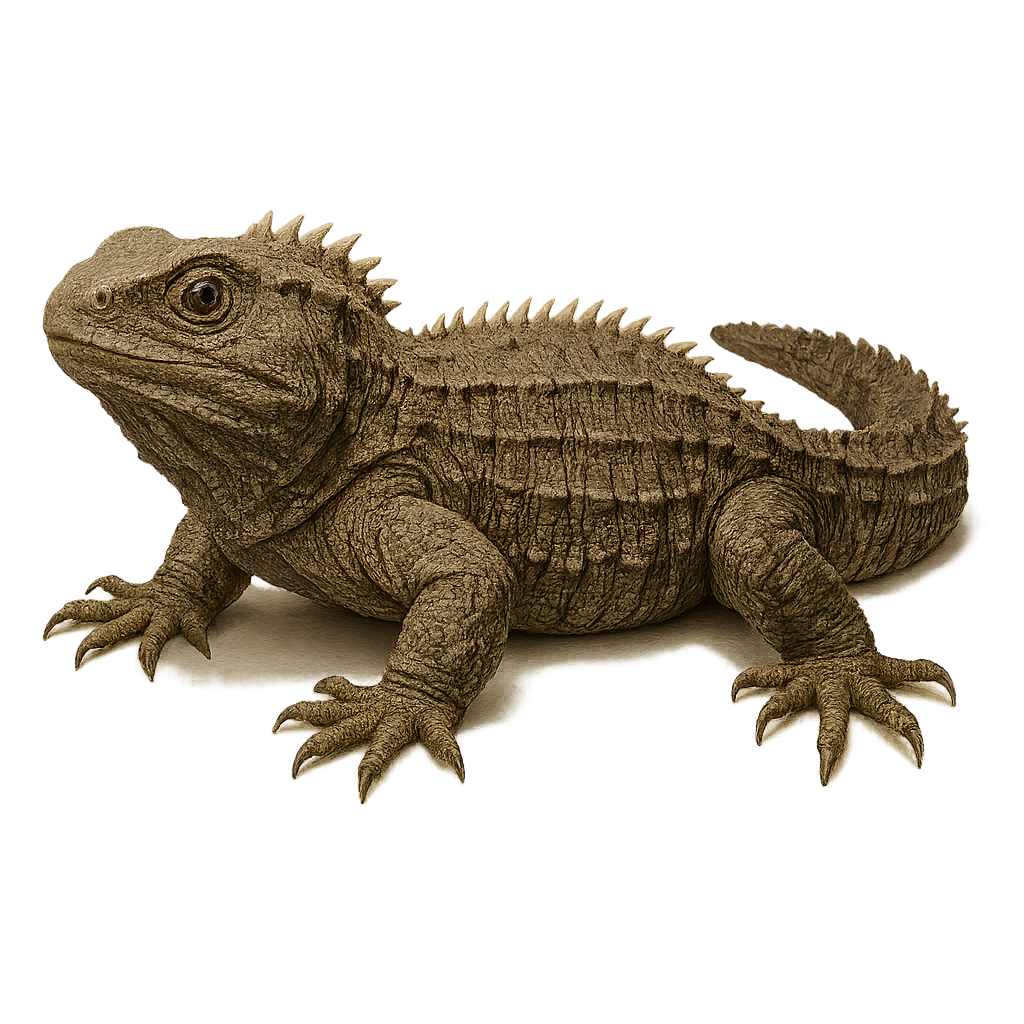Your wildlife photography guide.
Explore the tuatara in detail, study its behavior, prepare your shots.
Where to observe and photograph the tuatara in the wild
Learn where and when to spot the tuatara in the wild, how to identify the species based on distinctive features, and what natural environments it inhabits. The WildlifePhotographer app offers tailored photography tips that reflect the tuatara’s behavior, helping you capture better wildlife images. Explore the full species profile for key information including description, habitat, active periods, and approach techniques.
Tuatara
Scientific name: Sphenodon punctatus

IUCN Status: Vulnerable
Family: SPHENODONTIDAE
Group: Reptiles
Sensitivity to human approach: Suspicious
Minimum approach distance: 5 m
Reproduction period: February to March
Incubation: 12–15 mois
Births: February to March
Habitat:
forests, rocky coasts
Activity period :
Mainly active at night, generally discreet during the day.
Identification and description:
The Sphenodon punctatus, commonly known as the tuatara, is a reptile endemic to New Zealand. Often considered a living fossil, it belongs to an order of reptiles that thrived around 200 million years ago. The tuatara is nocturnal, primarily active at night, and feeds on insects, spiders, small birds, and eggs. It is recognizable by its spiny crest along the back, more pronounced in males. Tuataras have an exceptional lifespan, with some living over 100 years. They are oviparous, and females lay eggs that take between 12 and 15 months to hatch. Although protected, tuataras are threatened by habitat loss and introduced predators.
Recommended lens:
400 mm – adjust based on distance, desired framing (portrait or habitat), and approach conditions.
Photography tips:
To photograph the tuatara, it is advisable to use a telephoto lens of at least 400mm to capture detailed images without disturbing the animal. Since the tuatara is primarily nocturnal, it is best to photograph it at dusk or dawn when the light is soft. Use a tripod to stabilize your camera and avoid motion blur. Be patient and discreet, as the tuatara can be suspicious. Avoid using flash, as it might scare the animal and disrupt its natural behavior.
The WildlifePhotographer App is coming soon!
Be the first to explore the best nature spots, track rutting seasons, log your observations, and observe more wildlife.
Already 1 431 wildlife lovers subscribed worldwide

